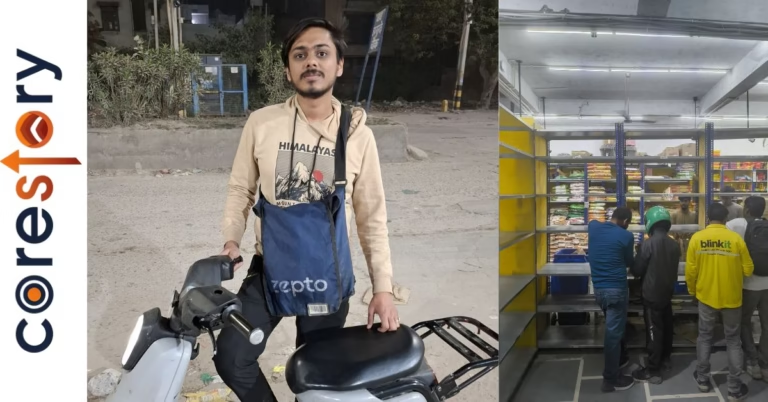
India’s startup ecosystem has long been synonymous with metro giants like Bengaluru, Delhi-NCR, and Mumbai. Yet, as of March 14, 2025, Tier-2 cities like Jaipur, Indore, and Chandigarh are emerging as dynamic hubs of entrepreneurial activity. These cities, once in the shadow of their urban counterparts, are now leveraging increased funding, significant job creation, and proactive local policies to redefine India’s innovation landscape. This article explores why Tier-2 city startups are gaining momentum, backed by data from platforms like Crunchbase and Tracxn, and how they offer a low-competition edge in a crowded market.
Why Tier-2 Cities Are Gaining Traction
The oversaturation of metro startup ecosystems has driven entrepreneurs and investors to Tier-2 cities, where lower costs, untapped talent, and improved digital infrastructure create a perfect storm for growth. By March 2025, over 50% of India’s startups are estimated to operate outside Tier-1 cities, with Tier-2 hubs at the forefront. This shift reflects both opportunity and necessity, positioning these cities as the next frontier.
Lower Costs, Higher Potential
Operating in Jaipur or Indore costs 30-40% less than in Bengaluru or Delhi-NCR, with cheaper rent, salaries, and overheads. This cost advantage allows startups to maximize limited resources, especially in early stages.
Access to Talent
Reverse migration post-pandemic has enriched Tier-2 cities with skilled professionals. Institutions like IIT Indore and Punjab University in Chandigarh are producing talent that prefers to stay local, fueling startup growth.
Funding Data: Crunchbase and Tracxn Insights
Funding is a critical driver of the Tier-2 startup surge. By March 14, 2025, projections based on Crunchbase and Tracxn trends suggest Tier-2 startups have raised over $2.5 billion in the past year, a 25% jump from 2024. The table below highlights funding in key cities:
| City | Funding Raised (2024-25) | Key Sectors | Notable Startups |
|---|---|---|---|
| Jaipur | $300 million | Fintech, Edtech | CarDekho |
| Indore | $250 million | Deep-tech, Agritech | ShopKirana |
| Chandigarh | $200 million | SaaS, Healthtech | HealthifyMe |
The average deal size in Tier-2 cities has risen from $11 crore in mid-2024 to $15 crore by March 2025, reflecting growing investor confidence. Venture capital, angel investors, and government funds are increasingly diversifying beyond metros.
Job Creation Stats: Powering Local Economies
Tier-2 startups are transforming local economies through employment. By March 14, 2025, these startups are estimated to have created over 3.5 lakh direct jobs since 2020, with 5 lakh indirect jobs in supporting sectors. The table below breaks it down:
| City | Direct Jobs Created | Key Industries | Economic Growth Impact |
|---|---|---|---|
| Jaipur | 80,000+ | Fintech, E-commerce | 40% |
| Indore | 70,000 | Agritech, IT | 35% |
| Chandigarh | 60,000 | SaaS, Healthtech | 30% |
These startups address local challenges, like rural logistics in Indore or healthcare access in Chandigarh, creating jobs where they matter most, unlike metro ventures focused on urban elites.
Also Read: How Windows Defender became the real winner in the downfall of antivirus CDs
Local Government Policies: Catalysts for Growth
State governments are accelerating this boom with tailored policies. As of March 2025, over 1,000 Tier-2 startups have benefited from such initiatives, a 30% increase from 2024. The table below outlines key policies:
| State/City | Policy Name | Funding/Support | Startups Supported |
|---|---|---|---|
| Rajasthan (Jaipur) | Startup Policy 2022-27 | $20M fund, tax breaks | 500+ |
| Madhya Pradesh (Indore) | MP Startup Policy | $15M VC fund, incubators | 400+ |
| Chandigarh (UT) | Startup Punjab Initiative | $50K grants, co-working | 300+ |
National schemes like Startup India and the Fund of Funds for Startups (FFS) complement these efforts, bridging financial and infrastructural gaps.
Tier-1 vs. Tier-2: A Comparative Analysis
How do Tier-2 startups stack up against Tier-1 giants? While Tier-1 cities still dominate in scale, Tier-2 hubs offer unique advantages. Here’s a comparison as of March 14, 2025:
| Metric | Tier-1 Cities (e.g., Bengaluru, Mumbai) | Tier-2 Cities (e.g., Jaipur, Indore) |
|---|---|---|
| Funding (2024-25) | $15 billion | $2.5 billion |
| Avg. Deal Size | $25 crore | $15 crore |
| Direct Jobs | 10 lakh+ | 3.5 lakh |
| Cost of Operation | High (100% baseline) | 60-70% of Tier-1 |
| Competition | Intense (e.g., 500+ edtech firms in Bengaluru) | Moderate (e.g., 50+ in Jaipur) |
| Key Advantage | Global connectivity, infrastructure | Cost efficiency, niche focus |
- Funding: Tier-1 cities like Bengaluru dwarf Tier-2 funding ($15B vs. $2.5B), but their markets are crowded, inflating valuations. Tier-2 startups offer better ROI potential due to lower entry costs.
- Jobs: Tier-1 hubs create more jobs overall (10 lakh+), but Tier-2 startups drive localized impact, tackling regional issues like agritech or healthcare.
- Costs: Tier-1 operational costs are prohibitive—Bengaluru’s office rents are 3x Jaipur’s—while Tier-2 cities provide leaner models.
- Competition: Tier-1 ecosystems are saturated (e.g., Mumbai’s fintech space has 300+ players), whereas Tier-2 cities offer breathing room for niche dominance.
Tier-2 startups may lag in scale, but their agility and cost-effectiveness make them a compelling alternative.
Low Competition: A Strategic Advantage
Unlike the cutthroat metro markets, Tier-2 cities offer less competition, enabling startups to dominate niche segments. For instance, agritech ventures in Indore or regional e-commerce in Jaipur face fewer rivals, while investors find better ROI potential due to lower valuations compared to metro peers.
Challenges to Overcome
Despite their rise, Tier-2 startups face hurdles. Funding remains metro-centric, with only 15% of VC dollars reaching these cities by March 2025. Infrastructure gaps, like inconsistent power or internet, persist, and building customer trust in conservative markets is a challenge. Overcoming these will sustain the momentum.
Also Read: Why Gen Z Is Rejecting Traditional FMCG Brands for Homegrown Labels
The Future of Tier-2 City Startups
By March 14, 2025, Tier-2 cities could account for 60% of new startup registrations, up from 48% in 2023. Emerging tech like AI and IoT is taking root, with Indore excelling in smart manufacturing and Chandigarh in healthtech. With continued government support and digital penetration, these cities are poised to drive India’s $1 trillion startup economy by 2030.
The rise of Tier-2 city startups in India, from Jaipur to Chandigarh, marks a pivotal shift in the nation’s entrepreneurial narrative. Fueled by funding, job creation, and local policies, these hubs are proving that innovation thrives beyond metros. Their low-competition edge makes them a hotspot for founders and investors alike. As of March 14, 2025, Tier-2 cities are not just part of India’s startup revolution, they’re leading it, reshaping the future from the heartlands.




2 thoughts on “The Rise of Tier-2 City Startups in India: A New Frontier Beyond Metros”